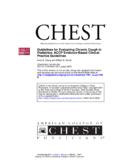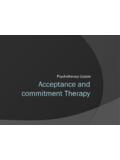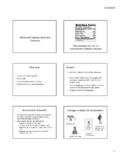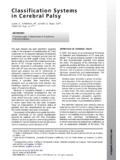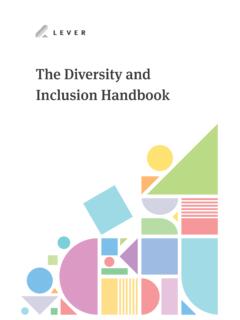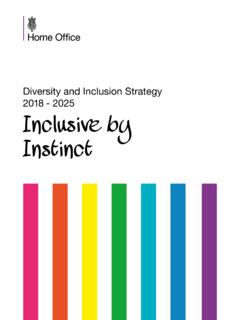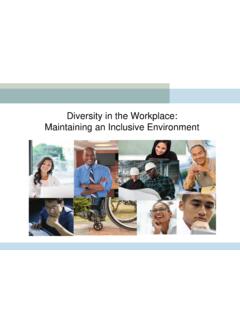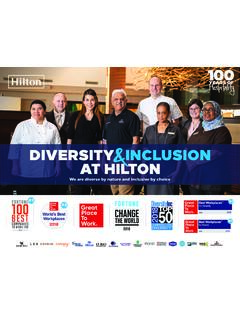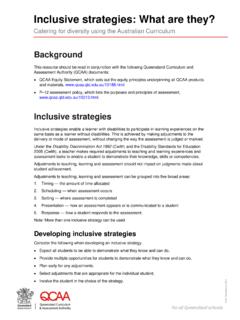Transcription of Inclusive Language Guide - OHSU
1 Inclusive Language GuideAn evolving tool to help ohsu members learn about and use Inclusive languageOHSU CENTER FOR diversity AND INCLUSIONF ebruary 2021 Inclusive Language puts our humanity at the center; it allows everyone to feel recognized, valued, invited and motivated to contribute at their highest level. To become an anti-racist institution, ohsu must take concrete action to change our culture and the experiences of ohsu members and stakeholders. If our words but not our deeds change, we have failed. Yet learning about and using respectful, identity-affirming Language is key to creating a welcoming environment that is anti-racist and embraces diversity as a ohsu Inclusive Language Guide is intended as an evolving tool to help ohsu members learn about and use Inclusive Language in institutional communications, patient care (including chart notes), instruction and presentations around descriptors of: Race and ethnicity Immigration status Gender and sexual orientation Ability (including physical, mental and chronological attributes) This Guide is a direct response to requests from many ohsu members in the wake of President Danny Jacobs June 2020 proclamation that ohsu will work to dismantle systemic racism.
2 Campus leaders in diversity , equity and inclusion and in communications convened a six-person, diverse, cross-institutional Inclusive Language Project Team. (See appendix)The team surveyed the employee resource groups and other campus affinity groups, including students and trainees, to make the case for and shape the Guide s content. In all, 272 ohsu members responded to the survey. They expressed strong agreement that a Guide is needed to better focus and achieve the aspirations of respect for all. Moreover, with their insights and feedback, the Guide became a unique reflection of ohsu , its members and what it means to a diverse range of individuals to feel seen and respected. I love the idea of having an ohsu standard for how to identify race and ethnicity, said one survey respondent.
3 It will make me feel better about my employment at ohsu to have this attention on respect and diversity . It will take time to update Language across platforms and software applications such as Epic and Oracle. Often, change related to gender and race will require conversations with vendors and the evolution of government descriptors. In some instances, arriving at standard descriptors is not possible given the diversity of human identity and the imprecision and evolution of descriptors. But ohsu members have made clear that education and guidance where possible is of contentsPrinciples 4 7 Race and ethnicity 8 13 Immigration status and Language proficiency 14 15 Sex, gender, gender identity and sexual orientation 16 21 Ability (physical, mental and chronological attributes) 22 25 Glossary of terms and definitions 26 29 Appendix 30 31 The goal of using Inclusive Language is not transactional it is not about getting it right or wrong as much as it is about a paradigm shift.
4 Like the saying that history is written by the victors, discourse tends to be dominated by the majority point of view in any given situation. In general, discourse in American society has tended to center the experience of people who are white, heterosexual and cisgender (their gender identity matches their sex assigned at birth), setting this experience up at the norm and everything else as an exception or deviation. By contrast, acknowledging and affirming difference from the outset shifts to the premise of honoring and inviting multiple perspectives, and celebrating rather than suppressing intention of this Guide is not to be prescriptive as much as instructive. The more we understand about Language , descriptors and their meanings, the more we can be intentional about how we speak and the impact of our words.
5 To develop this Guide , we used insights from survey participants combined with scholarly and journalistic sources to offer the following principles to help you think about word choice: Identity is personal: Every individual has the right to describe themselves as they wish. One survey respondent said, As a fat person, I m offended by the word obese, as many fat people are. Many fat people reclaim the word fat. Among people who fit the Census description of Hispanic (descending from a Spanish-speaking country), diversity and the ways individuals describe themselves is vast. This Guide offers insight on general terms that does not supersede how individuals choose to describe themselves. Respect: Not everyone wants to share their identity. If you are leading a group or setting the stage in a conversation, create space for people to show up as they are to the extent that they wish to.
6 A survey respondent said, We need to allow people at the individual level to choose whether they wish to disclose their individual identities. Respect for privacy is important. Ask: When interacting with people for the first time, describe your intention to use respectful Language and ask, How do wish for me to refer to you? One survey respondent suggested, When caring for a patient who is from a culture or group you are unfamiliar with, you must ask them how you can make them feel safe and respected. Sharing how you wish to be addressed is one way to establish a dialogue in a group setting: Welcome to our class. I m Dr. Neville. My pronouns are she/her/hers. I identify as Jamaican; it s where my parents are from. I grew up in Seattle. I d welcome knowing how each of you would like to be addressed or anything else you would like us to know so that we can honor our diversity and refer to each other respectfully.
7 But what you choose to share now or in the future is up to you, and if you wish to share information privately with me, that s also OK. I just want everyone to feel invited to be who they are in this class. Be specific: We often hide behind vague words or generalizations when we are uncomfortable, such as using the word diverse to refer to people who are not white and heterosexual. But this is incorrect. Diverse refers to two or more people who are different from one another. Diverse is not defined as a person or people who are different from you, as if you are the norm and they are diverse. If referring to a wide spectrum of nonwhite people and specifying race is relevant, you might say, people of color and/or individuals who identify with other underrepresented groups (if, in fact, they are underrepresented, such as in medicine or science).
8 Or if you know the specific makeup of a group, you could just be one of the survey respondents said, Since I have switched to saying what I mean rather than hiding behind vague terms, I have been much more effective in building relationships and making necessary points about how to move forward in issues that surround race. Another said, Use clear, unambiguous Language . Be thoughtful and intentional: When is it even appropriate to call out a person s race or physical or mental attributes? We recommend being thoughtful. In a chart note, for example, one provider suggested including race and other such personal attributes in the social history but not in an introductory statement about a patient where such attributes can trigger bias. So rather than introducing the patient as a 25-year-old, Black woman, you would instead include her race in the social history because we know that a patient s race is a social determinant of Inclusive Language and affirming difference from the outset shifts to the premise of honoring and inviting multiple perspectives, and celebrating rather than suppressing diversity .
9 Be kind and affirming: People-first Language : We are all people with various attributes - a person who lives with mental illness, a person who is gay or heterosexual. It is generally advised not to lead with the attribute, as if that attribute defines the whole person such as, a mentally ill person or an undocumented person. However, there are exceptions. Accepted terminology for individuals of transgender experience may include a transgender person, transgender woman or transgender man (the gender the person has transitioned to). Identity-first Language leads with a defining attribute. In the Deaf community, for example, Deaf person is acceptable. People on the autism spectrum often call themselves autistic people. Always, when in doubt, ask how a person refers to themselves or, for general usage, use people-first Language but be open to correction.
10 Avoid labels: Instead of addict use, a person with a substance use disorder. Instead of labeling a patient noncompliant in a chart note, say did not complete treatment or stopped taking medication. When we label people, it is as if that word wholly and forever defines them; it can also trigger biases in others. As people, our attributes can change over time. A person with a substance use disorder may simultaneously be a person in recovery. Use asset- not deficit-based Language : The goal is to focus on strengths. Here are examples from the grant-writing world:ASSET BASED DEFICIT BASEDOur mission is to amplify the voices in our mission is to give voice to the communities we partner with are strong and communities we serve are strong and in our community are our future.


